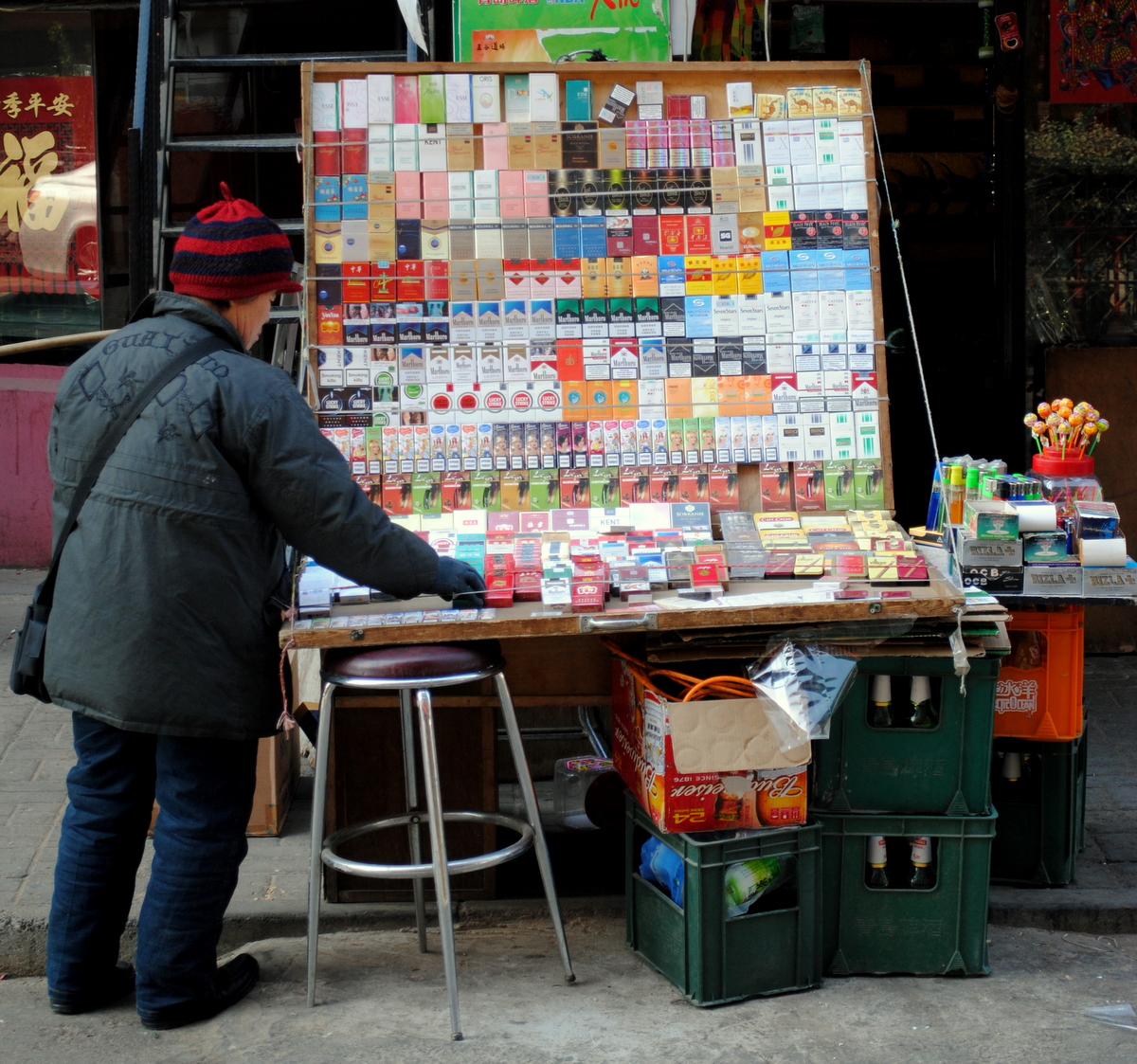The intent of this article is to explain and introduce China’s tobacco market. It also provides insight as to what views Chinese critics hold with respect to the market’s future. The Chinese tobacco market has great potential due to the staggering number of potential consumers. However, it is also very different in comparison to other countries in terms of its socialist market economy and Chinese characteristics.
The Chinese Tobacco Market and Chinese Consumers
Within China’s tobacco market, there is a vast disparity between the number of male and female smokers. This represents a huge opportunity for foreign tobacco makers. In terms of consumer number, the American Cancer Society states that around 63 percent of Chinese males between the ages of 15 and 69 smoke, while only 4 percent of females in the same age range do. With around 1.7 trillion cigarettes consumed a year, China already represents around one-third of the world’s tobacco market. Though more than 99 percent of the country’s tobacco market is dominated by China’s state-owned tobacco company, companies such as >British American Tobacco which produce Lucky Strikes and Pall Mall cigarettes are slowly making inroads to the Chinese market.
Smoking ban extended from public officials to mass consumers, and regionally to nationally
2014 was recognized as a significant year for China as it took further steps toward the control of tobacco usage, largely via
progressive anti-smoking legislation. At the end of 2013, all public officials were required to set a good example and were banned from smoking in designated public places. This draft legislation regarding public smoking caused significant controversy, with consumers no longer allowed to smoke in all indoor some outdoor public places. Consequently, the draft not only heralded in the era of a national smoking ban but also upgraded regional smoking bans to a national level.
The share of the high-end cigarette market will continuously increase
According to the report ‘The predicted demand and strategy of China’s tobacco market during 2015-2020’, in recent years, China’s output and sales of cigarette manufacturing industry have continuously increased annually, but the speed of the growth was constantly decreasing. In particular, this can be demonstrated by the 2% decline in growth of output for the year 2013. The tobacco industry started to take the strategy to build and develop brands at the end of 2000. Through this method, actions were to take to reduce the number of brands but meanwhile expand the scale of the remaining brands. This has resulted in significant improvement of the overall brand structure. In 2010, the report ‘comprehensive plan on the level of tobacco industry’ put forward two targets called “532” and “461″, aimed to speed up the pace of resource integration and shift focus toward the brand. A considerable number of small, regional brands has been replaced by some large, well-known brands. Apart from the impact on sales and output of cigarettes, the Chinese government also issued some bans on this industry, with the intent to accelerate the merge of cigarette industry and capital operations, thus enhancing the concentration of industry brands. Statistics show that from 2001 to 2012, the number of national cigarette brands had been reduced from 1183 to 117. Cigarette manufacturers in China are focusing on optimizing their product portfolios and building strong brands. In 2014, 28 key tobacco brands altogether accounted for a 94% share of overall value sales. Developing strong brands and promoting unit price growth is the strategic direction proposed by the STMA (State Tobacco Monopoly Administration). In recent years, with the improvement of the level of consumption, the cigarette smoking habits of Chinese people are also changing. China’s cigarette consumption level improves gradually, and the demand for high-end brands continues to grow, which promotes the production and sales of more high-end brands. Therefore, in the context of the overall development of the cigarette industry, the share of the high-end cigarette market will continuously increase.
International expansion to drive growth
Due to the highly saturated nature of the Chinese tobacco market and its slowdown in growth, the STMA is encouraging tobacco manufacturers to seek growth internationally. After the focus on structural optimization to boost value growth, other opportunities will need to be identified if the market is to register a strong performance over the forecast period. With their growing global economic influence, Chinese manufacturers will seek new growth opportunities abroad. However, due to the presence of strong global competitors and different competition regulations, it will take time for Chinese tobacco brands to win over foreign consumers.
Does China actually consider opening its tobacco market?
The China National Tobacco Corporation created in 1982 is the business entity of the tobacco monopoly in China, it has been establishing as the government’s regulatory arm to regulate and to manage the industry. The production of the CNTC reach 98% of the Chinese market, the other multinational companies have a small combined share of 1%. Only a limited number of foreign brands are produced legally in China such as Marlboro. The other foreign brands have to respect import quotas.
As the CNTC is looking to expand abroad, they have generated a lot of partnerships with international brands, to facilitate their expansion abroad. Those companies, in another hand, are willing to expand to the Chinese markets with that kind of arrangement. For the moment, Multinational such as Philip Morris International PMI, Japan Tobacco Inc, JTI and Imperial Tobacco have a direct collaboration with CNTC.
With a country committed to increasing its tobacco industry, tobacco the analysts foresee that China’s market will continue growing over the next five years despite the rise of the tobacco control efforts.
We hope you enjoyed reading this article and have gained more of an insight into the tobacco industry in China. If you would like to learn more about this topic or to get more information on another market in China, we, the Daxue Consulting team, are happy to answer any inquiries. Contact us!
Follow us on Twitter, to stay up to date:
In #China, there is a vast disparity between the number of male and female #smokers https://t.co/Uh6x9Ly88p pic.twitter.com/WFoa2KEvQk
— Daxue Consulting (@DaxueConsulting) October 30, 2015






